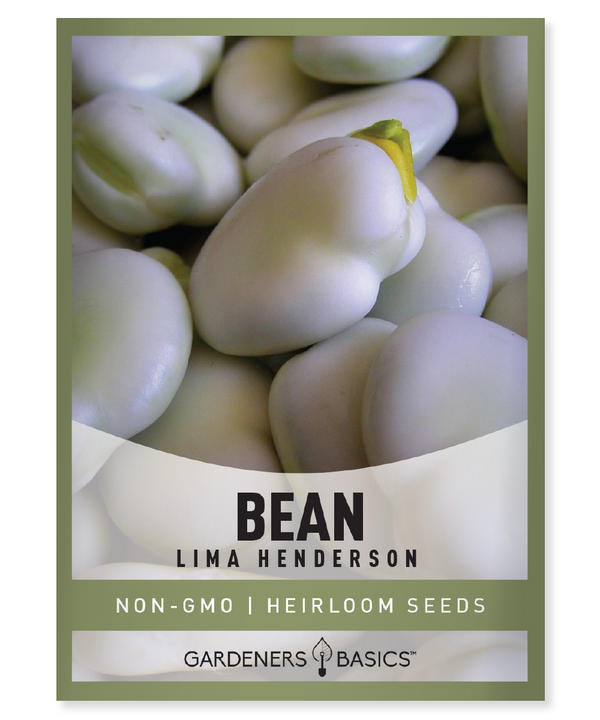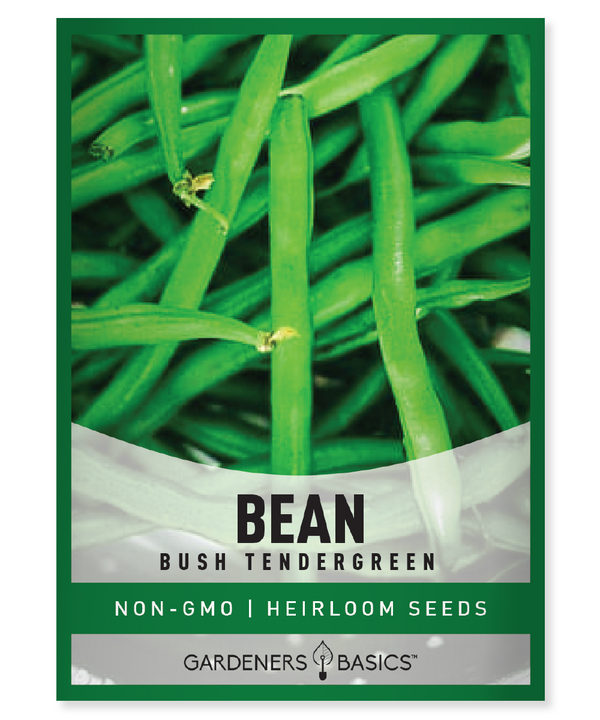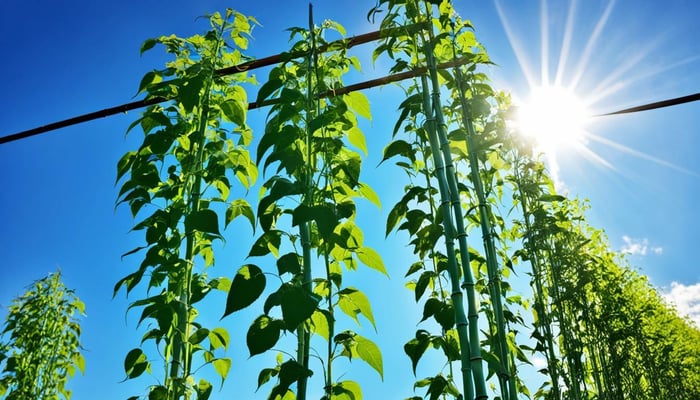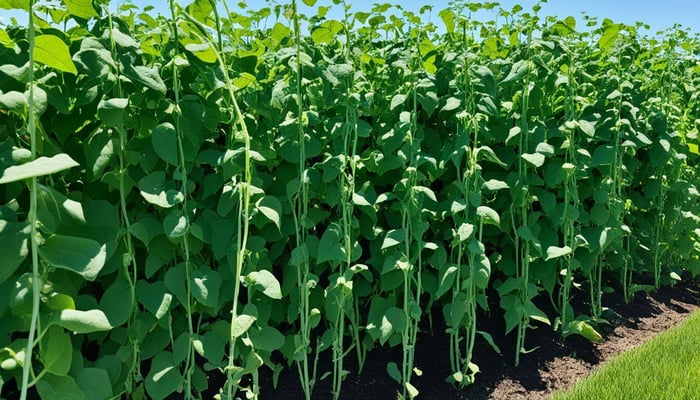Beans are a delicious and easy-to-grow addition to any vegetable garden. There are two main types of beans: bush beans and pole beans. Both varieties are easy to grow and produce a bountiful harvest. In this article, we will discuss how to grow bush and pole beans, including the best varieties, garden space requirements, seed selection, planting tips, and bean harvest.
Bush Beans Varieties
There are many different types of bush beans to choose from, each with its own unique flavor and appearance. Some of the most popular bush bean varieties include:
- Blue Lake
- Contender
- Provider
- Roma II
- Tendergreen
Lima Henderson Bean Seeds

$2.49
Lima Henderson Bean Seeds – Heirloom, Non-GMO, Non-Hybrid, Open-Pollinated Seeds for High-Yield Gardens Grow delicious, creamy, and nutrient-packed Lima Henderson Beans with our premium heirloom seeds, perfect for gardeners of all skill levels. These non-GMO, non-hybrid, open-pollinated seeds are ideal… read more
Blue Lake is a classic and popular variety that produces long, straight, and tender beans that are great for canning or freezing. Contender is a heavy-yielding variety that produces beans that are firm, meaty, and flavorful. The provider is a reliable and early-maturing variety that produces uniform, round beans that are tender and delicious. Roma II is a stringless and meaty variety that is great for canning or freezing. Tendergreen is a popular and versatile variety that produces tender and flavorful beans that are great for eating fresh, canning, or freezing.
When selecting your bush bean seeds, consider your taste preferences and the size of your garden. It's best to choose a few different varieties to plant so that you can enjoy a diverse and flavorful harvest.
Garden Space
Bush beans do not require a lot of garden space and are well-suited for small vegetable gardens. When planting bush beans, you should space the seeds or seedlings about 2-3 inches apart and plant them in rows that are 18 inches apart. This will give the plants enough space to grow and produce a healthy crop.
Pole beans, on the other hand, require more garden space as they can grow up to 10 feet tall. When planting pole beans, you should space the seeds or seedlings about 4-6 inches apart and plant them in rows that are at least 3 feet apart. This will give the plants enough space to grow up their supports and produce a bountiful harvest.
Bean Seeds
When selecting bean seeds, it's important to choose fresh beans that have been harvested within the past year. Old bean seeds may not germinate well and may produce weak and unhealthy plants. You can purchase bean seeds from our online seed store. It's also a good idea to choose a variety that is well-suited for your climate and growing season.
Bush Tendergreen Bean Seeds

$2.49
Bush Tendergreen Bean Seeds - Heirloom, Non-GMO, High-Yield, Stringless Green Beans Grow your garden with Bush Tendergreen Bean seeds, a classic heirloom variety known for its tender, stringless pods and robust flavor. Our non-GMO, non-hybrid, open-pollinated seeds ensure you’ll enjoy reliable… read more
Soil Temperatures
Bush beans and pole beans grow best in soil temperatures between 60 and 85 degrees Fahrenheit. You should wait until the soil has warmed up before planting your bean seeds. In most areas, this is typically in late spring or early summer. If you are unsure about the soil temperature in your area, you can use a soil thermometer to check.
Plant Bush Bean Seeds
To plant bush beans, follow these simple steps:
- Prepare your garden bed by removing any weeds and loosening the soil.
- Make small holes in the soil about 1 inch deep and 2-3 inches apart.
- Place one bean seed in each hole and cover it with soil.
- Water the soil well to help the seeds germinate.
Growing Bush Beans
Bush beans are easy to care for and require minimal maintenance. Here are some tips for growing healthy and productive bush beans:
- Water regularly: Bush beans require consistent moisture to produce a healthy crop. Water the plants regularly, especially during dry periods.
- Fertilize: Use a balanced fertilizer,such as 10-10-10, to provide your bush beans with the nutrients they need to grow strong and healthy. Apply the fertilizer according to the package instructions.
- Succession plant: To extend your bean harvest, plant bush beans every 2-3 weeks throughout the growing season. This will ensure a continuous supply of fresh beans throughout the summer.
- Mulch: Mulch your bean plants to help retain moisture and suppress weeds. Apply a layer of organic mulch, such as straw or leaves, around the base of the plants.
Bean Harvest
Bush beans typically mature about 50-60 days after planting. You will know that your beans are ready to harvest when the pods are firm and crisp, and the seeds inside are fully developed. To harvest your beans, gently pull the pods off the plant. Be sure to harvest your beans regularly to encourage continued growth and production. If you leave the pods on the plant for too long, they may become tough and stringy.
Pole beans, on the other hand, can take a bit longer to mature, usually around 60-70 days after planting. Once the beans are ready to harvest, you can pick them by hand or use a pair of scissors to snip them off the vine. Be sure to harvest your pole beans regularly to encourage continued growth and production.
Common Problems
While bush and pole beans are generally easy to grow, they can be susceptible to a few common problems, including:
- Diseases: Beans can be susceptible to various diseases, such as bacterial blight and bean mosaic virus. To prevent these diseases, be sure to choose disease-resistant varieties, rotate your crops, and keep the garden bed clean and free of debris.
- Pests: Bean beetles and aphids are common pests that can damage your bean plants. To control these pests, you can use insecticidal soap or neem oil, or handpick the beetles off the plants.
- Poor soil drainage: Beans require well-drained soils to grow and thrive. If your soil is heavy or poorly drained, consider amending it with organic matter, such as compost or aged manure.
Vegetable Seed Vault Kit | 35 Variety Pack

$29.95
$49.95
Ultimate Survival Seed Vault: 16,000+ Non-GMO Heirloom Vegetable Seeds for Emergency Preparedness Introducing the Seed Vault Kit, your all-in-one solution for emergency preparedness and sustainable gardening. This premium seed kit contains over 16,000 non-GMO, Heirloom, Non-Hybrid, and Open Pollinated seeds,… read more
Conclusion
Growing bush and pole beans is a fun and rewarding activity for gardeners of all skill levels. With a little bit of planning and care, you can enjoy a bountiful harvest of fresh beans throughout the growing season. Remember to choose the right varieties for your garden space, plant fresh seeds in well-drained soils, and provide your beans with regular water and fertilizer. With these tips, you can successfully grow healthy and productive bush and pole beans in your vegetable garden. I hope now you know how to grow bush and pole beans you'll give growing them a try!







